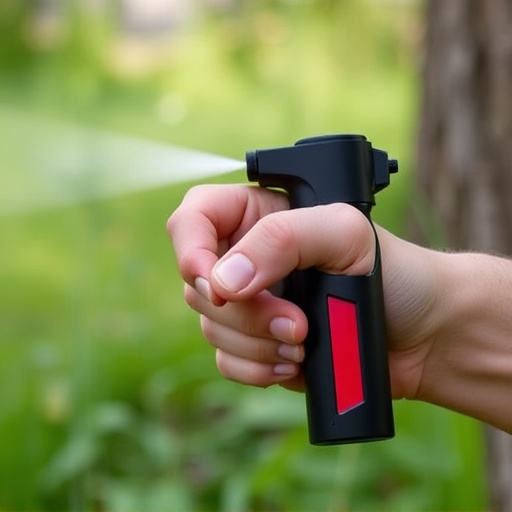Alternative weapons to guns, such as pepper spray, stun guns, personal alarms, and body cameras, offer non-lethal self-defense options in regions with strict gun control laws. These tools empower individuals to protect themselves temporarily, escape, or seek help without resorting to lethal force. With a growing interest in proactive self-protection, these alternatives provide middle ground between no protection and firearms, each offering tailored deterrence levels and specific advantages. Understanding legal constraints, safety protocols, and proper training is crucial for effective deployment as a last resort.
“In an era where personal safety is a paramount concern, understanding self-defense devices has become essential. This comprehensive guide explores non-lethal alternative weapons to guns, offering insights into legal considerations and safety protocols crucial for armed preparedness. From pepper spray to stun guns and beyond, we dissect popular choices in self-defense tools. Additionally, expert tips on training and effective use ensure readers are equipped with the knowledge needed for real-world application.”
Understanding Self-Defense Devices: An Overview
Self-defense devices are portable tools designed for individuals to protect themselves in various situations, offering an alternative to guns for those who prefer or cannot carry firearms. These devices range from non-lethal options like pepper spray and stun guns to more advanced technologies such as personal alarms and body cameras. Understanding the capabilities and limitations of these self-defense weapons is essential, especially in regions with strict gun control laws.
Many self-defense devices are meant to disable or deter attackers temporarily, allowing users to escape or seek help. Pepper spray, for instance, can cause temporary blindness and respiratory distress in an assailant, giving the user precious time to flee. Stun guns, on the other hand, deliver electric shocks that can incapacitate an attacker for several minutes. These alternatives to guns provide individuals with increased personal safety without the need for lethal force, making them appealing choices for those seeking empowerment and peace of mind.
Exploring Non-Lethal Alternative Weapons to Guns
In recent years, there’s been a growing interest in exploring non-lethal alternative weapons to guns for personal defense, reflecting a broader trend towards more proactive self-protection strategies. This shift is driven by factors such as increased awareness of safety, evolving urban landscapes, and a desire for less destructive options. Non-lethal devices offer a middle ground between carrying no protection at all and the potential overreach of firearms.
These alternative weapons to guns range from pepper spray and Tasers to stun guns and personal alarm systems. Each provides a unique level of deterrence tailored to different situations and user comfort levels. Pepper spray, for instance, temporarily incapacitates an attacker by irritating the eyes and respiratory system. Tasers, on the other hand, use electric current to disrupt muscle control, allowing users to disable aggressors without causing permanent harm. Beyond these, stun guns and personal alarms trigger loud noises or flashing lights to startle potential threats, providing vital seconds for escape.
Legal Considerations and Safety Protocols
When considering self-defense devices, it’s crucial to understand legal considerations and safety protocols. The use of alternative weapons to guns, such as pepper spray or stun guns, is governed by local laws and regulations, varying widely from one jurisdiction to another. It’s essential to research and comply with these laws to avoid legal repercussions. Safety protocols include proper training, storage, and understanding the range of effectiveness for each device. Users should be aware of their surroundings, act responsibly, and only deploy such devices as a last resort when facing an imminent threat.
Understanding the limitations and potential consequences is key. Devices like pepper spray have a finite reach and may not always disable an attacker effectively. Stun guns have a short-circuit impact but can still allow an attacker to continue fighting if they manage to grab the device. Therefore, self-defense training that complements these tools with physical techniques, awareness, and de-escalation strategies is vital for comprehensive protection.
Popular Choices in Self-Defense Tools
In today’s world, self-defense is a top priority for many individuals seeking to protect themselves and their loved ones. While firearms are traditionally seen as a primary defense option, there are numerous alternative weapons to guns that offer effective and accessible ways to deter and defend against potential threats. Popular choices include non-lethal options such as pepper spray, stun guns, and tactical batons. Pepper spray is an affordable and easy-to-use option, delivering a temporary incapacitating effect through irritants. Stun guns, on the other hand, use electric current to disrupt muscle control, providing a powerful yet non-fatal response. Tactical batons, or nightsticks, are versatile tools that can be used for striking, pushing, or disrupting an attacker’s grip. These alternatives offer a layer of security without the need for extensive training or licensing required for firearms.
Beyond these common choices, innovative self-defense devices are constantly emerging to cater to diverse needs. From personal alarms that emit ear-piercing sounds to deter attackers to wearable technology that can detect and alert users to potential dangers, there’s a growing array of options available. Some devices even utilize advanced technologies like motion sensors or GPS tracking for enhanced safety. These alternative weapons to guns empower individuals to take charge of their safety, providing peace of mind in an uncertain world.
Training and Effective Use: Tips for Preparedness
When it comes to self-defense, many people automatically think of firearms as their primary tool. However, there are numerous alternatives to guns that can be just as effective in certain situations. From everyday objects to specialized devices, mastering alternative weapons requires training and practice. It’s crucial to understand not only how to use these tools but also when and where they offer the most advantage.
For instance, a simple pepper spray or personal alarm can create enough disorienting factors to enable an escape. On the other hand, self-defense keys or a tactical stick can be used to strike and disrupt an attacker’s grip or balance. Proper training ensures that individuals can deploy these alternative weapons with precision and force when needed, enhancing their overall preparedness for any potential threats.
